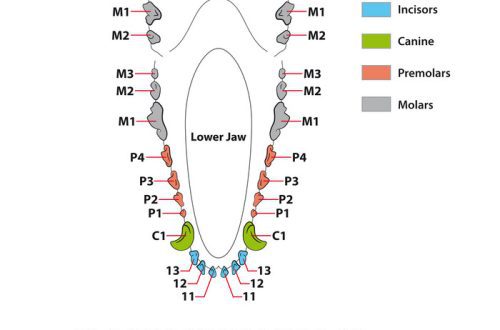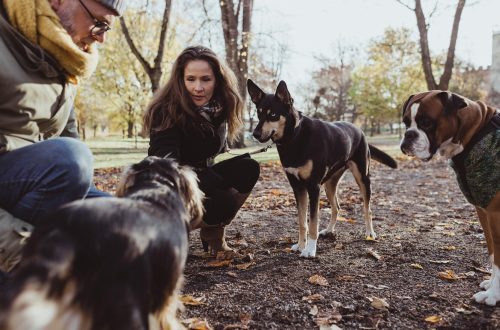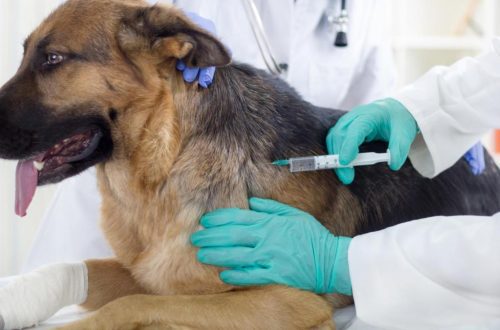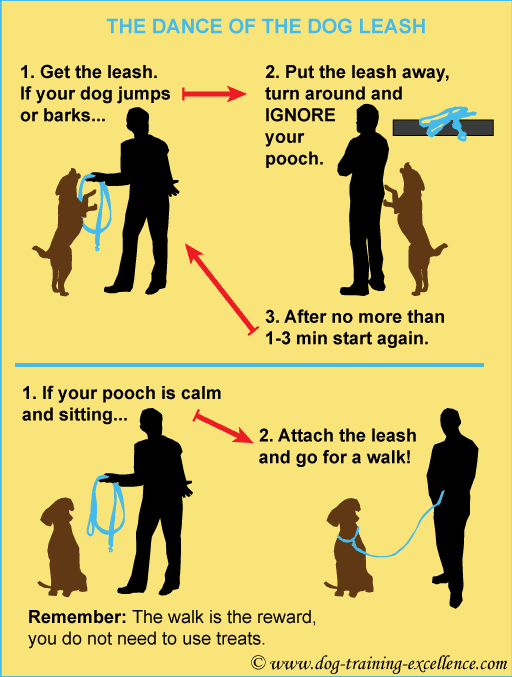
Useful dog walking tips
Before you got a dog, you probably assumed that dog walking was long and relaxing walks with leisurely exploration of the surroundings and hiking trails. In these pre-doggy fantasies, your four-legged friend most likely minced dutifully beside you on a leash, following your every command and looking at you with adoration.
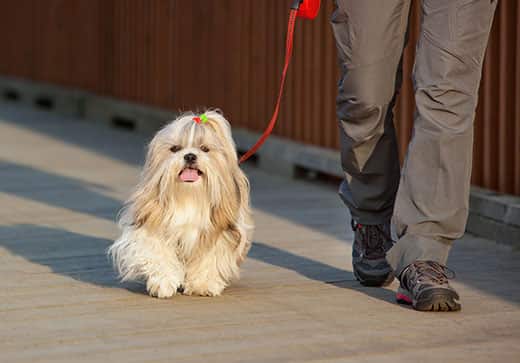 Then you get a dog and the fantasies dissolve. Why does my dog need to stop and urinate on everything? Why does she have to sniff every blade of grass? Yes, it might upset you, but don’t pull the leash!
Then you get a dog and the fantasies dissolve. Why does my dog need to stop and urinate on everything? Why does she have to sniff every blade of grass? Yes, it might upset you, but don’t pull the leash!
After all, walking a dog in the city is important to her health and happiness. Walking keeps your pet mobile and flexible and helps relieve problems like constipation. Regular walks also help the animal not to gain extra pounds. Walking your dog is also important for reducing or eliminating destructive behavior. Animals that don’t get enough exercise, that feel restricted or full of extra energy, may start digging holes in your yard or chewing on everything from your shoes to sofa cushions.
Walking with you also strengthens the bond with your pet and gives him the opportunity to meet and interact with other people and dogs in the environment. It is very important to socialize your dog. Socialized pets tend to be happier and more welcoming than non-socialized dogs, who can be anxious and fearful of new people or animals.
And we haven’t even talked about how a dog affects your health! Michigan State University study published in the New York Timesfound that 60 percent of dog owners who regularly walked their pets met the federal criteria for regular moderate to vigorous exercise. At the same time, almost half of the walkers received physical activity for an average of 30 minutes a day at least five days a week. By comparison, only about 30 percent of people without dogs had such regular exercise.
But what to do about your dog’s weird walking habits? Let’s take a look at some of the bizarre (and annoying!) things dogs do on a leash. Why are they doing this and what can you do to reduce the problem?
Contents
Dog urinates while walking
Why is your dog doing this? Dogs have developed a territorial instinct, and urine is a dog’s natural way of marking its territory. She informs the other dogs that she has been there and claims the territory. Territory marking in animals usually begins at puberty.
What to do? First, check with your veterinarian. Make sure your dog’s stops every three meters to urinate are actually related to tagging and not health issues like a bladder infection. If it’s a behavioral problem, you can teach her to reduce her need for frequent tagging, but you can’t get her to stop doing it altogether. In addition, dogs that have not been neutered or spayed have a greater tendency to mark territory than those that have undergone medical intervention.
Rolling in the mud
Why is your dog doing this? When you come across garbage or an object with a strong smell on a walk, does your dog stop, fall and start rolling around in this place? Although it is not known exactly where dogs got this disgusting habit from, one version suggests that this trait is inherited from wolves. They wallow in the scent and then bring it back to the pack for further study.
What to do. Keep your four-legged stink-eater on a leash (this is important advice whether he likes to wallow in the mud or not). Teach him the “Foo!” command, then reward him with treats when he obeys. Never pull on the leash to pull him away from a smelly object, so as not to harm him.
Pulls on the leash
Why is your dog doing this. Because you are walking too slowly! Because you are not going there! Because she wants it!
What to do. This behavioral problem can be corrected with appropriate training. Use treats and rewardsso that the dog walks at the same pace as you. If she pulls on the leash PetMD advises to try a leash-roulette. She does not allow the animal on a leash to go far from you. Also, by not giving your dog any slack on the leash, you can teach him to stay close to you during walks. The longer the distance, the more she thinks she is allowed to explore the area, so she pulls on the leash.
Lying still and refusing to move
Why is your dog doing this. Maybe she got hurt, sick, or tired.
What to do. Examine the dog. Lost paws? Is the asphalt too hot? Is she too hot? Let her rest and drink. If that doesn’t work and there are no obvious signs of injury, use treats to coax your dog into going home. In general, before heading out, think about your dog’s abilities and exercise needs. For example, an English Bulldog is likely to have very different expectations from a walk than a Labrador Retriever. Never force a dog to go for a walk. If she really doesn’t want it, come back and try again later. Forcing a pet in the absence of his desire can lead to injury. But if the problem becomes chronic, see your veterinarian to see if the animal has a health complication that you may not have suspected.
Runs back and forth
Why is your dog doing this. A dog’s sense of smell is much sharper than yours. You can’t smell all the enticing scents of other animals and people the way she does. It chases scents, zigzagging back and forth, and may not even notice that it gets in your way.
What to do. Train your pet to walk beside and on a specific side of you. Make up your own walking rules and teach your dog to follow them. You can use verbal cues and treats to teach her how to walk properly on a leash. However, the dog gets an indescribable pleasure from sniffing, so giving him the opportunity to do this when it is convenient for both of you is a good thing. Again, keeping him close to you on a short leash will help correct her behavior and keep you from tripping.
Biting the leash
Why is your dog doing this. She’s oh-oh-so-very happy that you’re taking her for a walk, and she needs to vent that energy somehow. And suddenly your leash turns into a game of tug of war.
What to do. Teach your dog to relax at the sight of the leash instead of being nervous. VetStreet offers some tips on how to teach her not to be too rowdy and to reward her if she sits quietly and calmly when you take out the leash.
Going for a walk is likely to be one of the highlights of the day for your dog. By teaching her and understanding why she does what she does, you can enjoy your daily walks just as much as your pet. Always keep in mind that the walk is just as important and interesting for her as it is for you. So while her habits are sometimes annoying, understand that it’s okay to let a dog be a dog… Well, maybe you shouldn’t let him wallow in the mud after all.



